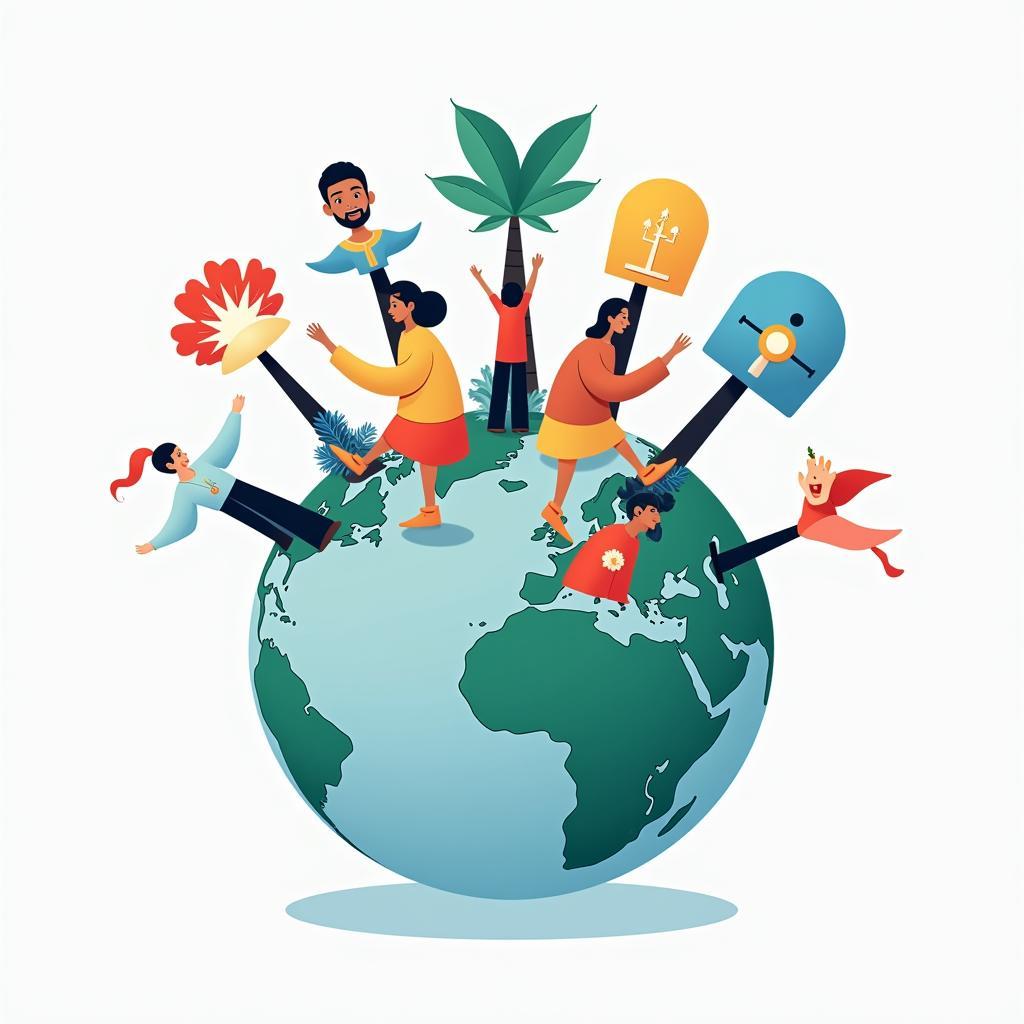Recent IELTS examination trends show that questions about cultural integration, diversity, and misunderstandings have appeared frequently, particularly in Writing Task 2. This topic’s relevance has increased due to globalization and cross-cultural interactions. Let’s examine one such question that has appeared in recent tests.
The influence of culture on conflict resolution is becoming increasingly important in today’s globalized world. Let’s analyze a common IELTS Task 2 question on this theme.
Question Analysis
Some people believe that in the future there will be a single global culture rather than different cultures. To what extent do you agree or disagree with this view?
This question requires candidates to:
- Take a clear position on cultural homogenization
- Support arguments with relevant examples
- Consider both current trends and future implications
- Discuss cultural diversity and globalization

Sample Essay 1 (Band 8.5)
While some believe that globalization will lead to a unified global culture, I strongly disagree with this view and believe that cultural diversity will persist despite increasing interconnectedness.
Admittedly, certain aspects of modern life are becoming standardized across the globe. The prevalence of international brands, social media platforms, and English as a lingua franca has created some common cultural touchpoints worldwide. For instance, young people in Tokyo, New York, and Mumbai might all wear similar fashion brands and use identical social media apps. However, this surface-level uniformity does not equate to true cultural homogenization.
Cultural identity runs far deeper than consumer habits or communication tools. Local traditions, values, and belief systems are deeply ingrained in societies and continue to shape people’s worldviews and behaviors. For example, despite modernization, countries like Japan maintain distinct cultural practices in business etiquette, social relationships, and traditional celebrations. Similarly, Indian family values and social structures remain largely unchanged despite western influences.
Furthermore, there is growing awareness about the importance of preserving cultural heritage. Many communities are actively working to maintain their unique cultural identities while participating in the global economy. This can be seen in the revival of traditional arts, languages, and customs across various societies. The UNESCO World Heritage program exemplifies international efforts to protect cultural diversity.
In conclusion, while globalization has created some common cultural elements, the rich tapestry of world cultures will continue to thrive and evolve distinctly. Rather than merging into one global culture, we are likely to see a world where cultural diversity coexists with shared modern experiences.
Sample Essay 2 (Band 6.5)
I disagree that there will be only one global culture in the future. I think different cultures will still exist even though the world is becoming more connected.
First, people want to keep their own culture. Many countries have special festivals and traditions that they celebrate every year. For example, Chinese people celebrate Lunar New Year, and Indians celebrate Diwali. These festivals are very important to them and they won’t stop celebrating them just because of globalization.
Second, language is a big part of culture. Even though many people learn English, they still speak their own language at home and with family. This helps keep their culture alive. Also, different languages have different ways of thinking and expressing ideas, which makes each culture unique.
However, some things are becoming more similar across the world. Many young people wear the same clothes and use the same social media. They watch the same movies and listen to the same music. But this doesn’t mean all cultures will become one.
In conclusion, while some aspects of life are becoming more similar, different cultures will continue to exist because people value their traditions and identity. The world will have both global and local cultural elements in the future.
Band Score Analysis
Band 8.5 Essay Analysis
- Task Response (9): Clear position, fully developed arguments
- Coherence and Cohesion (8): Logical organization, effective paragraphing
- Lexical Resource (8.5): Sophisticated vocabulary use (prevalence, lingua franca, cultural heritage)
- Grammar (9): Complex structures accurately used
Band 6.5 Essay Analysis
- Task Response (6): Clear position but simpler development
- Coherence and Cohesion (7): Basic but clear organization
- Lexical Resource (6): Limited but adequate vocabulary
- Grammar (7): Mix of simple and complex sentences
Key Vocabulary
- Cultural homogenization (n) /ˌhoʊmədʒənaɪˈzeɪʃən/ – The process of becoming uniform across cultures
- Lingua franca (n) /ˌlɪŋɡwə ˈfræŋkə/ – A common language used between people who speak different languages
- Cultural heritage (n) /ˈkʌltʃərəl ˈherɪtɪdʒ/ – Traditional customs passed down in a society
- Globalization (n) /ˌɡloʊbəlɪˈzeɪʃən/ – The process of worldwide integration
- Cultural diversity (n) /ˈkʌltʃərəl daɪˈvɜrsəti/ – The existence of different cultures in a society
Consider practicing with these similar topics:
- The impact of technology on local cultures
- Preserving traditional cultures in modern society
- The role of language in cultural identity
Share your practice essays in the comments for feedback and discussion!